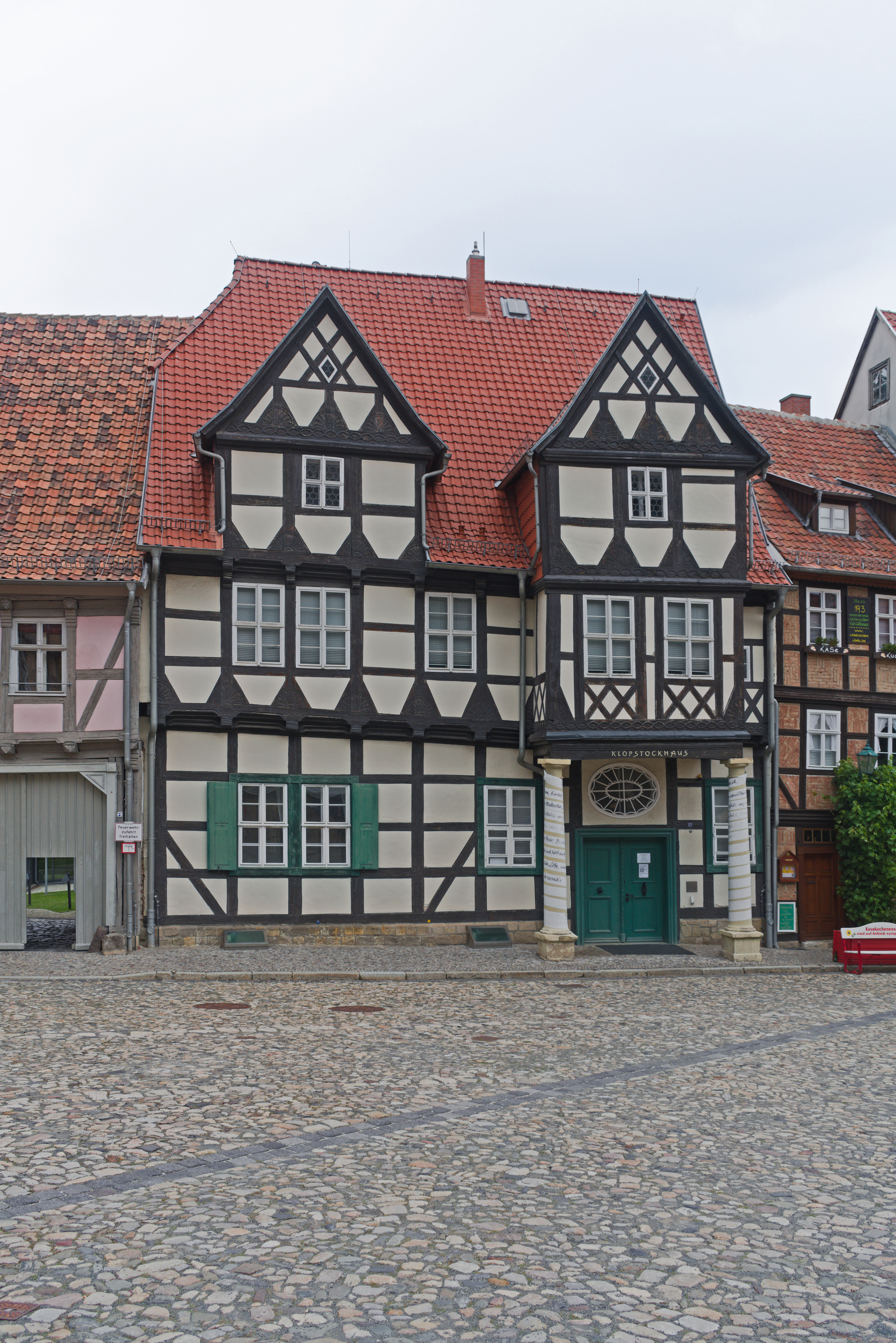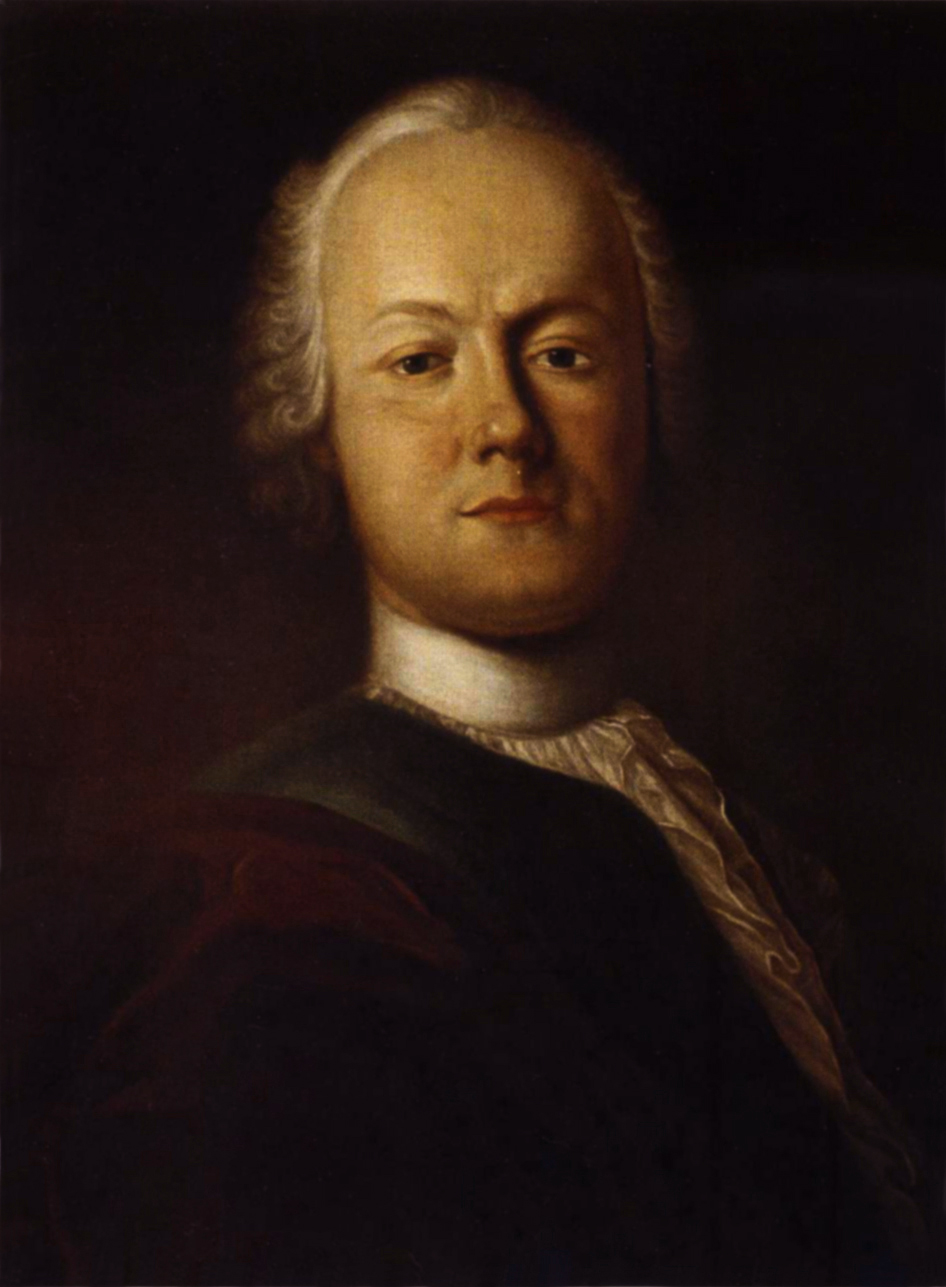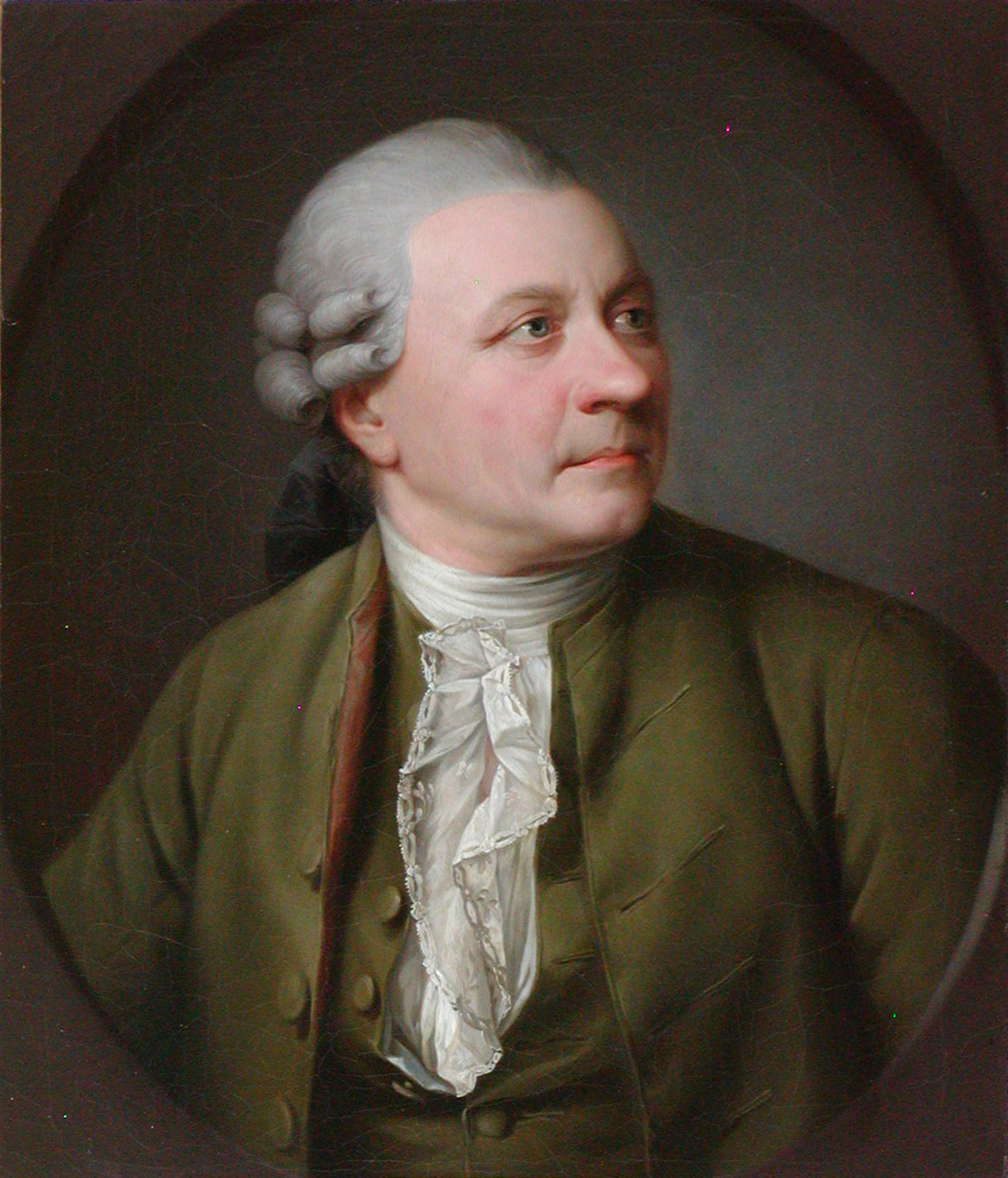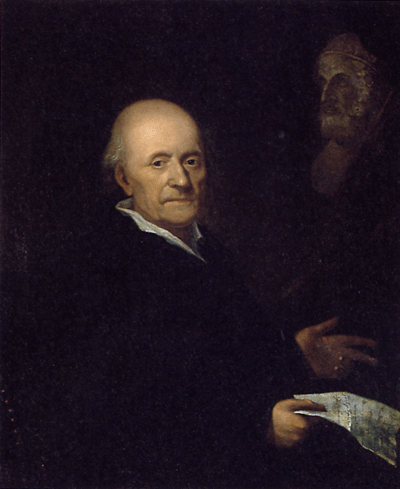1. Overview
Friedrich Gottlieb Klopstock (KlopstockˈklɔpʃtɔkGerman) (1724-1803) was a pivotal German poet who significantly shaped the literary landscape of his era and influenced subsequent generations. He is best known for his epic poem, Der Messias ("The Messiah"), which explored Christian mythology and the theme of redemption. Klopstock's major contribution to German poetry was his bold departure from the rigid French literary models that had long dominated the German literary scene, opening new avenues for poetic expression and enriching its vocabulary and prosody. Beyond his literary achievements, Klopstock was intellectually engaged with the major societal changes of his time, notably expressing early enthusiasm for both the American War of Independence and the French Revolution, although his stance on the latter evolved following its more violent phases. His profound influence extends beyond literature, as his hymn Die Auferstehung ("The Resurrection") was famously incorporated into Gustav Mahler's Symphony No. 2.
2. Biography
Friedrich Gottlieb Klopstock's life spanned from 1724 to 1803, marked by significant literary achievements, personal losses, and engagement with the political shifts of his time.
2.1. Early Life and Education
Klopstock was born on July 2, 1724, in Quedlinburg, then part of the Electorate of Saxony, as the eldest son of a lawyer. He spent a happy childhood in both his birthplace and on his father's rented estate in Friedeburg on the Saale river. Initially, more attention was given to his physical development than to his mental faculties, resulting in him growing up strong and healthy and becoming an excellent horseman.

At the age of thirteen, he returned to Quedlinburg to attend the local gymnasium. In 1739, he proceeded to the renowned classical school, Schulpforta. There, he quickly became proficient in Greek and Latin versification and composed several commendable idylls and odes in German. His initial intention was to write an epic poem with Henry the Fowler as its hero. However, under the profound influence of John Milton's Paradise Lost, which he encountered through Johann Jakob Bodmer's translation, he shifted his focus to a religious epic. While still a student, he had already formulated the comprehensive plan for Der Messias, the work that would become the cornerstone of his fame. On September 21, 1745, upon leaving school, he delivered a notable "departing oration" on epic poetry, Abschiedsrede über die epische Poesie, kultur- und literargeschichtlich erläutert, emphasizing its cultural and literary historical significance.
2.2. Formative Years and Early Publications
Following his time at Schulpforta, Klopstock enrolled at the University of Jena as a theology student. During his time there, he meticulously drafted the first three cantos of Der Messias in prose. Finding the academic environment at Jena not to his liking, he transferred in the spring of 1746 to the University of Leipzig. In Leipzig, he became involved with a circle of young literary figures who contributed to the periodical Bremer Beiträge. It was in this publication that the first three cantos of Der Messias were anonymously published in hexameter verse in 1748.
The publication of these cantos marked the beginning of a new era in German literature, and the author's identity soon became widely known. While in Leipzig, Klopstock also composed a number of odes, including An meine Freunde (1747), which was later re-edited as Wingolf (1767). After leaving the university in 1748, he became a private tutor for a relative's family in Langensalza. Here, he experienced unrequited love for a cousin, the "Fanny" of his odes, which significantly distressed him. In 1750, he gladly accepted an invitation from Bodmer, the translator of Paradise Lost, to visit him in Zürich. Initially, Klopstock was warmly received in Zürich, and his spirits quickly recovered. However, Bodmer soon grew disappointed upon discovering that the young poet of Der Messias possessed strong worldly interests, leading to a cooling of their friendship.

2.3. Time in Copenhagen and First Marriage
At a critical juncture, Klopstock received an invitation from Frederick V of Denmark, upon the recommendation of his minister Johann Hartwig Ernst, Count von Bernstorff, to reside in Copenhagen. The offer included an annuity of 400 thaler, with the expectation that he would complete Der Messias during his time there. Klopstock accepted this generous offer.
On his journey to the Danish capital, he met Margareta, or Meta Moller, in Hamburg. She was the daughter of a Hamburg merchant and an ardent admirer of his poetry, becoming the "Cidli" of his odes. They married in 1754. Their happiness, however, was tragically short-lived, as Meta died in childbirth in 1758, leaving Klopstock heartbroken. His profound grief over her loss is poignantly expressed in the fifteenth canto of Der Messias. Following her death, Klopstock published his wife's writings, Hinterlassene Werke von Margareta Klopstock (1759), which demonstrated her tender, sensitive, and deeply religious spirit. Her memoirs and correspondence with figures like Samuel Richardson also provided insights into her character.
2.4. Later Life and Political Engagement
Following Meta's death, Klopstock entered a period of melancholy, finding himself devoid of new ideas, and his poetry became more introspective. Nevertheless, he continued to reside and work in Copenhagen. During this time, he, influenced by Heinrich Wilhelm von Gerstenberg, shifted his literary focus to northern mythology, believing it should supersede classical subjects in the development of a new school of German poetry.

In 1770, when King Christian VII dismissed Count Bernstorff from his position, Klopstock retired with Bernstorff to Hamburg. He continued to receive his pension and retained the honorary rank of councillor of legation. The final five cantos of Der Messias were eventually published in 1773. The following year, Klopstock released his comprehensive plan for the revitalization of German letters, titled Die Gelehrtenrepublik (1774).
In 1775, he embarked on a journey south, and en route, he made the acquaintance of Johann Wolfgang von Goethe. He then spent a year at the court of the Margrave of Baden in Karlsruhe. From there, in 1776, he returned to Hamburg, bearing the title of Hofrath and a pension from the Margrave, which he maintained concurrently with his Danish pension. He spent the remainder of his life in Hamburg.
During his later years, Klopstock, as was his natural inclination, lived in relative seclusion. He occasionally socialized with his closest friends and devoted himself to philological studies, showing only limited interest in the newer developments in German literature. However, he remained deeply enthusiastic about contemporary political upheavals, expressing strong support for the American War of Independence and the early stages of the French Revolution. Before the French Revolution commenced, upon the convocation of the Estates-General, Klopstock penned an ode proclaiming it the "most important event of the century," reflecting his progressive ideals. The French First Republic later bestowed upon him a diploma of honorary citizenship. Nevertheless, Klopstock became horrified by the "terrible scenes" and excesses of violence enacted in the name of liberty during the Revolution, leading him to renounce and return the diploma.
At the age of 67, Klopstock entered into a second marriage with Johanna Elisabeth von Winthem, a widow who was also a niece of his late first wife. She had been one of his closest friends for many years. He passed away in Hamburg on March 14, 1803, and was widely mourned across Germany. His funeral was a grand ceremony, and he was laid to rest beside his first wife in the churchyard of the village of Ottensen.
3. Major Works
Friedrich Gottlieb Klopstock's literary and scholarly contributions were diverse and profound, establishing him as a pioneering figure in German letters.
3.1. Der Messias
Der Messias stands as Klopstock's most renowned and monumental work. His aspiration to become an epic poet was a driving force from his early years, and this poem fulfilled that ambition. The central theme of the work is Redemption, presented through an epic narrative deeply rooted in Christian mythology and the dogmas of the Church.
Klopstock consciously drew inspiration from John Milton's Paradise Lost as a formal model for his poem. The composition of Der Messias was a lengthy endeavor, taking twenty-five years to complete its full twenty cantos. The first three cantos, published anonymously in 1748, generated intense public enthusiasm. Upon its completion, the work was translated into seventeen languages and inspired numerous imitations, solidifying its place as a significant literary achievement. While the initial cantos were highly praised for their religious fervor, some critics suggest that the epic narrative lost some of its coherence in later sections.
3.2. Odes and Dramas
Klopstock's distinct poetic talent found its fullest expression in his extensive collection of lyrical poetry, known as odes. These poems explored a wide thematic range, including religious inspiration, nature, and Nordic mythological subjects. Some of his most celebrated and widely translated odes include An Fanny, Der Zürchersee (written after his 1750 visit to the Swiss Au peninsula on Lake Zurich), Die tote Klarissa, An Cidli, Die beiden Musen, Der Rheinwein, Die frühen Gräber, and Mein Vaterland. His religious odes often take the form of hymns, with Die Frühlingsfeier being particularly admired for its beauty. The work known as Songsi (誦詩) (1771), which showcased his poetic talent most fully, was praised for its lofty, musical language, singing of patriotism, love, and faith, and influenced young Goethe, Hölderlin, and Rilke. He also penned Der am Kreuz ist meine Liebe, which was later included in a shortened and revised form in the 2013 Catholic hymnal Gotteslob.
In addition to his odes, Klopstock also contributed to dramatic literature. He explored themes from ancient German history in plays such as Hermanns Schlacht (1769) and Hermann und die Fürsten (1784), celebrating the deeds of the ancient German hero Arminius. Other dramas, including Der Tod Adams (1757) and Salomo (1764), drew their material from the Old Testament. These dramatic works constitute an important part of his overall literary output, although they are generally considered less impactful than his epic poem or odes. The composer Sigrid Henriette Wienecke utilized Klopstock's writings as the text for her musical drama Fader Vor.
3.3. Prose and Philological Writings
Klopstock's contributions extended beyond poetry and drama into prose and scholarly discourse, where he played a significant role in the development of German language and literary theory. His notable prose work, Die Gelehrtenrepublik (1774), proposed a detailed scheme for the regeneration of German letters. He also authored important philological writings such as Fragmente über Sprache und Dichtkunst (1779) and Grammatische Gespräche (1794). Through these works, Klopstock made substantial contributions to the study of German philology and to the historical understanding of German poetry, influencing academic discussions on the subject.
3.4. Correspondence and Editions
Like many intellectuals of his time, Klopstock maintained an extensive correspondence with his contemporaries, including friends and colleagues. These letters are invaluable as historical and literary records, providing insights into his personal life, intellectual development, and the literary and social milieu of the 18th century. Many of these correspondences have been published in various collections, including Klopstock und seine Freunde (1810) by K. Schmidt, which served as the basis for an English translation, Klopstock and his friends. A series of familiar letters, written between the years 1750 and 1803 (1814) by Elizabeth Benger. Other notable collections include Klopstocks Nachlass (1821) by Christian August Heinrich Clodius and Briefe von und an Klopstock (1867) by Johann Martin Lappenberg.
Klopstock's collected works, Werke, first appeared in seven quarto volumes between 1798 and 1809. Concurrently, a more comprehensive edition was published in twelve octavo volumes from 1798 to 1817, with an additional six volumes added in 1830. Further nineteenth-century editions were released in 1844-1845, 1854-1855, 1879 (edited by R. Boxberger), 1884 (edited by R. Hamel), and 1893 (a selection edited by F. Muncker). A critical edition of his Odes was published by Franz Muncker and J. Pawel in 1889, accompanied by a commentary by Johann Heinrich Joseph Düntzer (1860; 2nd ed., 1878).
4. Literary Thought and Style
Klopstock's literary thought was marked by a revolutionary desire to liberate German poetry from its adherence to French models, particularly the rigid Alexandrine verse form. He championed a new poetic sensibility that emphasized emotional depth, subjective experience, and a deeper engagement with the German language itself.
He enriched poetic vocabulary and paid meticulous attention to prosody, which significantly benefited subsequent poets. By moving away from French influences, Klopstock essentially founded a new era in German literature. His use of a lofty, musical language in his odes also greatly influenced later poets, making his work a cornerstone for the development of German Romanticism and Classicism.
5. Personal Impressions and Character
Contemporaries often described Friedrich Gottlieb Klopstock with admiration and a sense of his profound character. Johann Wolfgang von Goethe, in his autobiography Dichtung und Wahrheit, recorded his personal impression of Klopstock, offering a valuable glimpse into his demeanor:

"He was of small stature, but well built. His manners were grave and decorous, but free from pedantry. His address was intelligent and pleasing. On the whole, one might have taken him for a diplomatist. He carried himself with the self-conscious dignity of a person who has a great moral mission to fulfil. He conversed with facility on various subjects, but rather avoided speaking of poetry and literary matters."
This description portrays Klopstock as a dignified, intellectually engaging, and somewhat reserved individual, deeply aware of his significant role in shaping German intellectual and literary life.
6. Death and Burial
Friedrich Gottlieb Klopstock died in Hamburg on March 14, 1803, at the age of 78. His passing was widely mourned throughout Germany, a testament to the profound respect and admiration he had garnered during his lifetime. His funeral was a grand and solemn ceremony, attended by many who wished to pay their last respects to the pioneering poet. He was laid to rest next to his first wife, Meta Moller, in the churchyard of the village of Ottensen, then near Hamburg.
7. Legacy and Influence
Friedrich Gottlieb Klopstock's enduring impact on German and wider European culture is multifaceted, having transformed literary norms and inspired future generations of artists.
7.1. Impact on German Literature
Klopstock's specific artistic contributions fundamentally transformed German poetry. His deliberate move away from the traditional Alexandrine verse form and his enrichment of the German poetic vocabulary, along with his meticulous attention to prosody, laid the groundwork for a new era in German literature. He is regarded as a founder of this new literary age, influencing key figures of German Classicism and Romanticism. Notable among those artistically indebted to him were Friedrich Schiller and Johann Wolfgang von Goethe, who admired his innovative approach. His works also influenced later poets such as Hölderlin and Rilke, who appreciated his musical language and profound emotional expression.
7.2. Wider Cultural Impact
Beyond the literary sphere, Klopstock's influence extended into classical music. His solemn and moving hymn, "Die Auferstehung" ("The Resurrection"), served as a direct inspiration for Gustav Mahler's Second Symphony. In 1894, during the funeral of Hans von Bülow, Klopstock's hymn gave Mahler the idea for the symphony's final movement. Mahler subsequently incorporated the hymn's text into his work, adding his own verses to bring a personal resolution to the monumental composition. This integration demonstrates Klopstock's lasting resonance and his reach into other artistic domains.
8. Commemoration
Various forms of remembrance and tributes have been dedicated to Friedrich Gottlieb Klopstock to honor his legacy. These include monuments, statues, and places named in his honor across Germany and beyond. Notably, an 800-year-old oak tree in Denmark, where Klopstock spent time, was named after him, serving as a living testament to his memory.